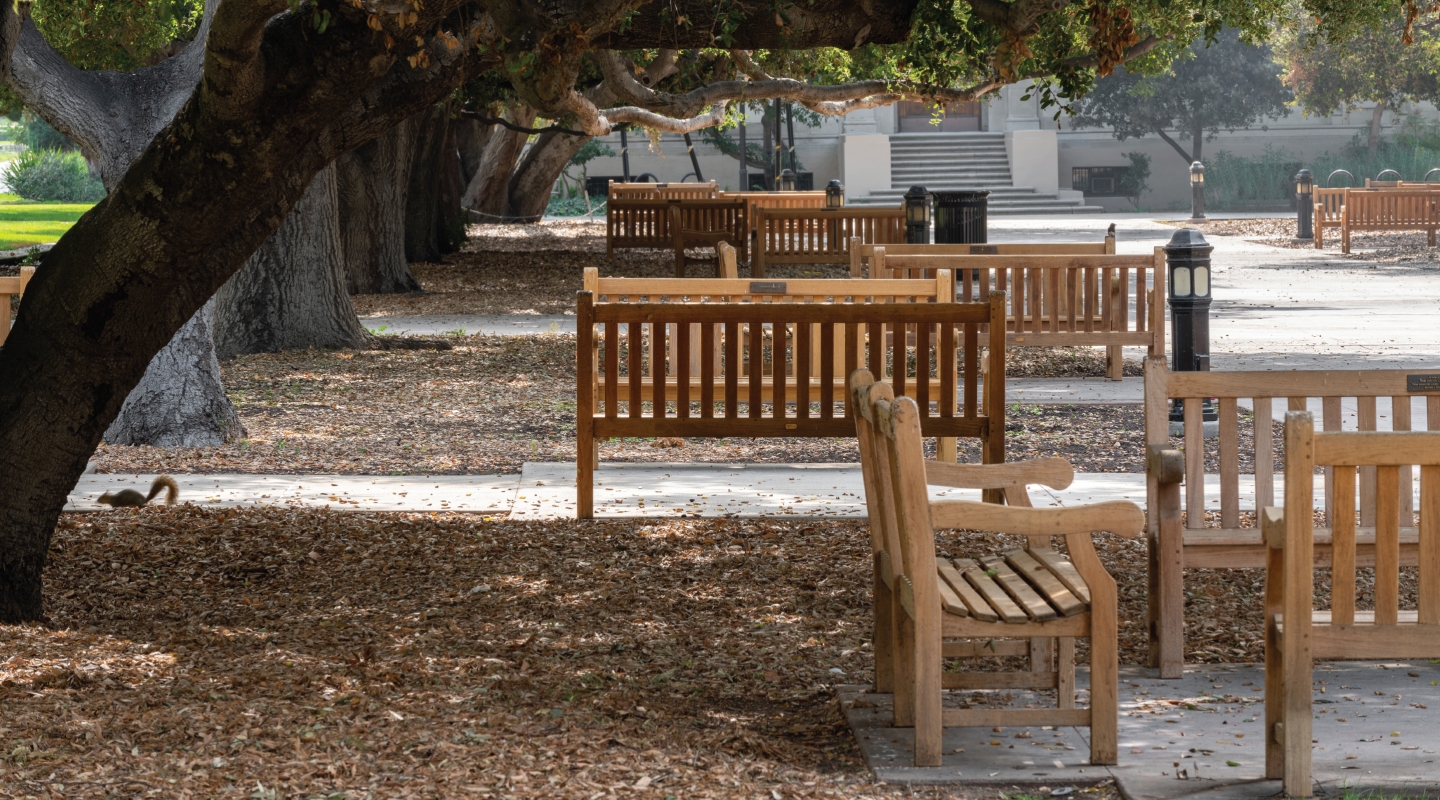As COVID-19 lingers on, Oxy leadership addresses the economic fallout of a remote fall semester
Having made what proved to be the right decision in July to prioritize the health and safety of students, faculty, and staff by committing to remote learning for the fall semester, Occidental now must address significant financial impacts as a result.
On July 15, President Harry J. Elam, Jr. announced that all instruction for the fall semester would be conducted remotely, based on surging numbers of COVID-19 cases both locally and nationally. Confirmation of the wisdom of that decision came one month later, when Los Angeles County public health officials announced that no in-person instruction could be offered by any colleges and universities in the county. Subsequently other schools around the country, citing pandemic-related health and safety concerns, suddenly changed plans at the last minute and moved to remote instruction, in some cases after classes had started.
As soon as the extent of the pandemic became clear in mid-March, Oxy implemented a series of prudent belt-tightening budget measures. But it wasn’t until the decision to go remote this fall was made that the full impact on the College’s two largest sources of revenue—tuition and room and board, which together provide two-thirds of the operating budget—could be assessed.
Overall enrollment this fall stands at around 1,835, or 11 percent less than last fall. That number includes a first-year class of 402, down about 20 percent—less than worst-case scenarios had predicted. A record 98 first-year students chose to defer admission for a year, meaning the College expects to welcome them to campus next fall.
Reduced enrollment and a $1,500 credit awarded to each student has cut tuition revenue. With only 6 percent of students on campus—international students and others facing difficult circumstances—empty residence halls mean the loss of almost all room and board revenues. These negative impacts plus additional pandemic-related expenditures have created a deficit estimated at more than $30 million—about one-quarter of the College’s $118 million 2020-21 operating budget.
While the deficit poses a substantial challenge, the College has been steadfast in preserving the integrity of the academic experience. “For all of us, it is paramount to address this operational deficit while holding fast to Occidental’s values and mission to deliver a rigorous and intellectually stimulating liberal arts education that is anchored in the cornerstones of excellence, equity, community, and service—as well as our emphasis on social justice,” Elam says.
To reduce the deficit, the Board of Trustees authorized an increased percentage draw on the endowment and the repurposing of unrestricted endowment funds. Other measures taken since March include a hiring freeze (37 positions currently unfilled) and a ban on overtime, travel, conferences, and new construction; voluntary pay cuts of 4 percent to 10 percent for senior staff and the president; cuts to departmental non-personnel budgets of up to 50 percent; and the reduction of the College’s 4 percent match for retirement benefits.
“The budget cuts would have been far deeper had we not put aside a fair amount of money into our reserves—our one-time endowment funds—over the past decade,” says Amos Himmelstein, vice president and chief operating officer. “Years of prudent management gave us a cushion, but those reserves now are being depleted.”
There are limits as to how much the College can draw on the endowment, Himmelstein notes. The majority of the endowment is made up of restricted funds dedicated to specific purposes designated by donors. “At the same time, we need to ensure that the endowment is preserved to guarantee the future and quality of Occidental in the years ahead,” he says.
Unfortunately, because of the size of the deficit and the continuing uncertainty about the future, the College furloughed 129 staff members—27 percent of the College’s non-faculty employees—who no longer have the same amount of work as they normally do. Reflecting the absence of students on campus, the departments most impacted are Student Affairs, Dining Services, and Facilities Management.
The College imposed furloughs only after meeting with staff, faculty, the Faculty Council, the Administrator Staff Council, employee unions, and with the leadership of the ASOC to share budget numbers and hear their perspectives, suggestions, and concerns. To support their colleagues who have been furloughed or otherwise affected financially by the pandemic, Oxy faculty, staff, and students launched an Employee Relief Fund, which has raised over $109,000.
College leadership is already looking ahead to the spring semester and beyond. “The health and safety of the Oxy community and the maintenance of the quality of an Oxy liberal arts education will continue to be the College’s top priorities,” Elam says. “Prudent financial management will continue to be essential as we seek to deal with the pandemic and operate in a planning environment filled with uncertainties.”




